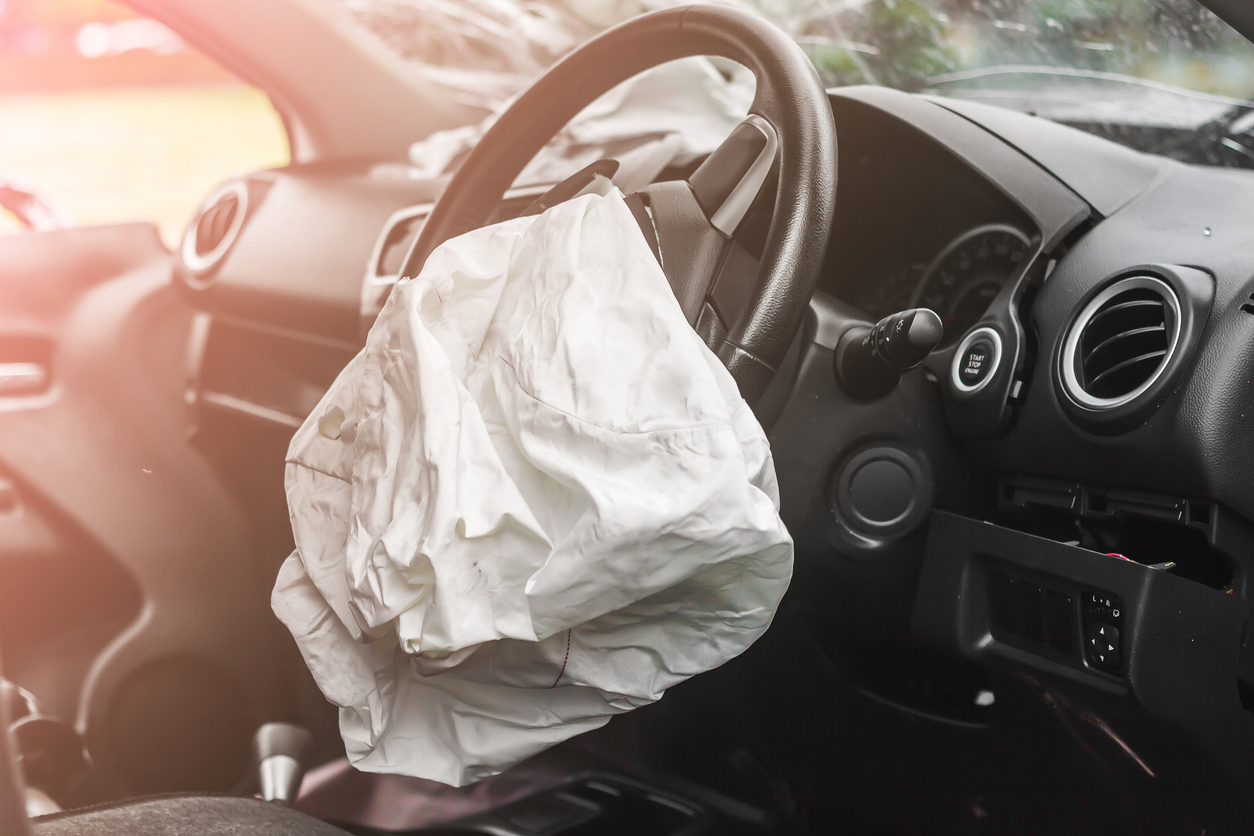Experiencing airbag deployment can be jarring. After ensuring everyone’s safety, a common question arises: “Is my car totaled?” The answer isn’t always straightforward. While airbag deployment suggests a significant impact, it doesn’t automatically equate to a total loss. This comprehensive guide will explore the factors determining whether your car is written off after such an incident.
Understanding the Total Loss Equation
The decision to declare a car a total loss hinges on a comparison between the vehicle’s Actual Cash Value (ACV) and the estimated repair costs. Think of it as a balancing act.
What is Actual Cash Value (ACV)?
ACV represents your car’s market value before the accident. Factors such as age, mileage, condition, pre-existing damage, and even location influence the ACV. Resources like Kelley Blue Book (kbb.com) and Edmunds can provide estimates, but the insurance company’s appraisal is the official figure.
The Role of Repair Costs
Repair costs encompass everything from visible damage to hidden issues. This includes:
- Airbag System Replacement: A significant expense, ranging from $1,000 to $5,000 or more per airbag. Multiple deployments, common in serious accidents, multiply this cost. Furthermore, associated components like sensors, the control module, the steering wheel, and dashboard sections often require replacement.
- Collision Damage: This covers the obvious dents, broken lights, and bodywork damage.
- Hidden Damage: This is the lurking iceberg. Airbag deployment often signifies a forceful impact that can cause unseen structural, mechanical, or electrical damage to the frame, engine, or other critical systems. A thorough inspection by a qualified mechanic is crucial to uncover these potentially costly issues.
The Total Loss Threshold: The Deciding Factor
Each state has a “total loss threshold,” a percentage of the ACV beyond which a vehicle is legally considered a total loss. This threshold typically ranges from 70% to 80% but varies by state and sometimes by specific insurance policy. If the estimated repair costs reach or exceed this percentage, the insurance company is likely to declare your car totaled, even if you could repair it. Check your state’s specific regulations for accurate information. For example:
| State | Example Total Loss Threshold |
|---|---|
| State A | 70% |
| State B | 75% |
| State C | 80% |
Keep in mind, this table is just an example. Always check your specific state’s regulations for the most accurate information.
Navigating the Aftermath of Airbag Deployment
After an accident involving airbag deployment, your first priority is safety. Check for injuries, contact emergency services if necessary, then notify your insurance company promptly. Here’s what to expect:
- Vehicle Inspection: An insurance adjuster will thoroughly assess the damage, both visible and potentially hidden.
- ACV Determination: The adjuster will determine your car’s ACV.
- Repair Estimate: The insurance company obtains repair estimates. You can also obtain independent estimates.
- Total Loss Determination: The insurance company compares the repair costs to the ACV and the state’s total loss threshold to decide if your car is totaled.
- Settlement Negotiation: If your car is totaled, the insurance company will offer a settlement based on the ACV. Don’t hesitate to negotiate if you believe the offer is too low. Providing supporting evidence, like recent maintenance records or comparable vehicle sales listings, can strengthen your position.
Is Repairing a Car with Deployed Airbags Worth It?
Even if your car isn’t deemed a total loss, consider the long-term implications of repairing a vehicle with deployed airbags:
- Finding Qualified Mechanics: Airbag systems are complex. Ensure repairs are performed by certified professionals with expertise in this area. Learn more about finding qualified mechanics.
- Salvage Title: If your car is totaled and you decide to repair it anyway, it will likely receive a salvage title. This can significantly impact resale value and even future insurability. Understand the implications of a salvage title.
- Hidden Damage and Long-Term Reliability: Even with meticulous repairs, there’s always a possibility of lingering issues from hidden damage, affecting long-term reliability and potentially leading to increased maintenance costs down the line.
- Psychological Impact: Some people experience emotional discomfort driving a car that’s been in a serious accident, even after it’s repaired.
Buying a Car with Deployed Airbags: Proceed with Caution
If you’re considering buying a car with a history of airbag deployment, exercise extreme caution.
- Thorough Inspection: A pre-purchase inspection by a trusted mechanic is essential to identify all damage, especially hidden structural or mechanical issues.
- Negotiating Price: The history of airbag deployment should significantly reduce the car’s value, providing leverage for negotiation.
- Verifying Repairs: Insist on documentation of all repairs, ensuring the airbag system was replaced correctly and functions properly.
Beyond the Airbags: A Broader Perspective on Safety
After airbag deployment, also inspect other safety features like seatbelts, anti-lock brakes, and electronic stability control. Consider the importance of regular vehicle maintenance in preventing accidents.
Conclusion
Airbag deployment is a serious event, but it isn’t a guaranteed sentence for your car. The decision to declare it a total loss depends on complex factors, including repair costs, ACV, the state’s total loss threshold, and your individual insurance policy. By understanding these factors and actively engaging with your insurance company, you can navigate this challenging situation more effectively. Remember, knowledge is your best tool in protecting your safety and financial well-being. Journey into the realm of motorcycle artistry with the mesmerizing Harley Davidson Cosmic Starship.
- Revolution Space: Disruptive Ion Propulsion Transforming Satellites - April 24, 2025
- Race Through Space: Fun Family Game for Kids - April 24, 2025
- Unlocking the Universe: reading about stars 6th grade Guide - April 24, 2025

















1 thought on “Airbags Deployed? Is My Car Totaled?”
Comments are closed.